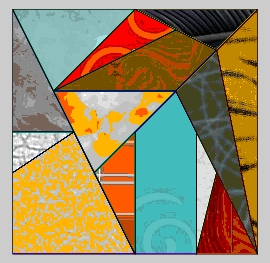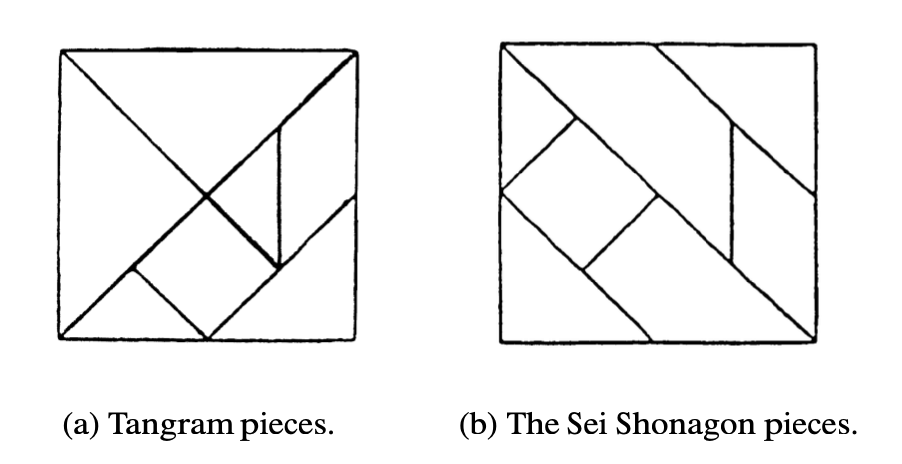Assignment 3: Inquiring into a topic of in the History of Mathematics through art
In this assignment, I choose to talk about "a historical innovation that had mathematical implications." The innovation was a puzzle called Tangram invented in China. I will present it by creating a piece of art (Tangram) and express what I have learned from the interesting history of Tangram.
Books:
Demaine, E.D., Demaine, M.L., & Rodgers, T. (Eds.). (2008). A Lifetime of Puzzles (1st ed.). A K Peters/CRC Press. https://doi.org/10.1201/b10573
The article "Tangram: The World's First Puzzle Craze" in Chapter II "In Hindsight" depicts the craze of Chinese Tangram in Europe during 19th century. The article also shows many historical pictures of the earliest known Tangram and relevant merchants.
Danesi, Marcel. An Anthropology of Puzzles : The Role of Puzzles in the Origins and Evolution of Mind and Culture, Bloomsbury Publishing Plc, 2018. ProQuest Ebook Central, https://ebookcentral.proquest.com/lib/ubc/detail.action?docID=5602778.
Chapter 1 "Puzzles in Mind and History" mentions the history of Ostomachion that is similar to Tangram.
Chapter 4 "Visual Puzzles" introduces some Tangram Puzzles such as Dudeney's Two Monks paradox and the intriguing nature of puzzles - "For Pythagoras, the harmonious arrangement of things in the universe was captured by the symmetry of geometrical figures. This is why, he claimed, the human eye derives such great pleasure from seeing geometric pattern."
Takagi, Shigeo. "Japanese Tangram: The Sei Shonagon Pieces." I Personal Magic, edited by Alwyn Berlekamp & Tom Rodgers (1999). pp 97-98.
In 1742, before tangram came to Japan from China in the early 19th century, a little book about Japanese seven-piece puzzles was published. The puzzle in the book was called the Sei Shonagon pieces.
Scholars Articles:
Kubota, Carol. (1976). "Tangrams: An Ancient Chinese Puzzle," Washington Office of the State Superintendent of Public Instruction, https://files.eric.ed.gov/fulltext/ED153822.pdf
The article shows the myth of origin of Tangram, and implements Tangram into lesson plans, intending to develop a conceptual skill development kit for all grade levels.
Websites:
Tangram Channel. "History of the Tangram Puzzle." https://www.tangram-channel.com/history-of-the-tangram/
The article in the website claims that Tangram is originated in Imperial China during the Tang Dynasty, they are thought to have travelled to Europe in the 19th century on trading ships.
Tangram Channel. "Tangram & Basic Concepts of Geometry." https://www.tangram-channel.com/tangram-geometry/
The article in the website illustrates how to make a Tangram by folding, cutting and utilizing the characteristics of isosceles right triangles, squares and parallelograms.






Sijie, Your plan looks great. I look forward to learning more about Tangrams from you!
ReplyDelete